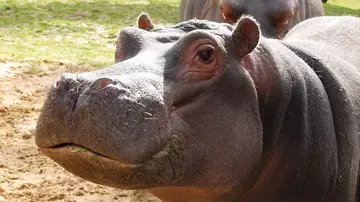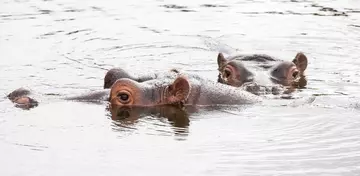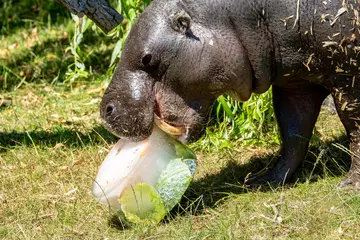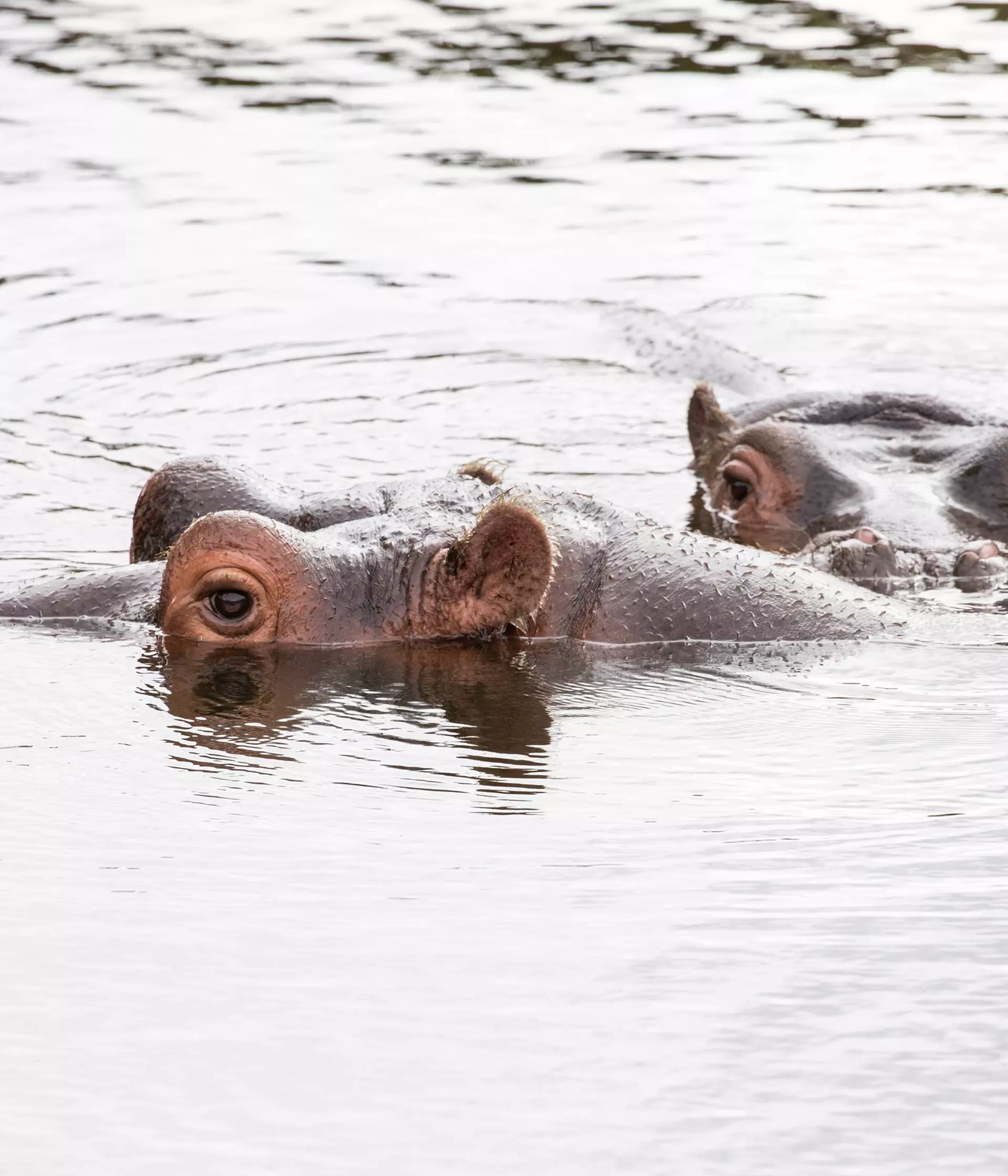
Here's five things you need to know about hippos. Look out for our fabulous hippos Hodor, Lola and Tapon when you next visit!
Visit our hippos at Whipsnade Zoo

There are two species: common hippos and pygmy hippos
And at Whipsnade Zoo, we're home to both!
Standing at just 1m tall, the pygmy hippo is significantly shorter than its larger cousin the common hippo, and is much lighter, at less than 20% of the weight. In the wild, pygmy hippos are found in West Africa and tend to live solitary lives in forests and swamps. They are known to be shy, often only coming out at night.
Common hippos, on the other hand, live in groups in rivers and lakes throughout sub-Saharan Africa. They spend up to 18 hours a day in water to keep their body temperature constant and to support their huge frame.
Fun fact: The word Hippopotamus comes from the ancient Greek - 'hippo' meaning horse and 'potamo' meaning river.
They make their own sunscreen
Hippos have very sensitive skin which easily becomes dry and cracked. They produce a pigment that acts as a natural sunscreen - a fluid oozes from glands under the skin which helps keep the skin moist and stops sunburn.

They have huge mouths
Hippos have enormous mouths which can be opened unbelievably wide, revealing their strong lower teeth.
A hippo's jaw is capable of opening up to 150 degrees compared to a human jaw which can open about 50 degrees. Adult hippos have razor-sharp tusks in the lower jaw. In the common hippo these teeth can grow as long as 50cm and weigh over 1kg!
Fun fact: Hippos are noisy feeders! A pygmy hippo can sometimes be heard eating from up to 50m away.

Common hippos have aquatic footwear
The common hippo and the pygmy hippo are related, but they have adapted to different habitats. And one of these adaptions is in the feet. The common hippo spends over half its life in the water. The toes on each foot are slightly webbed to aid swimming, and the feet are large and flat, acting as paddles underwater.
The pygmy hippo is less aquatic and spends more time on land, taking cover in the dense tropical forest during part of the day. The toes are long and spread out so are more adapted to walking on the land.

Pygmy hippos are living on the EDGE
Pygmy hippos are recognised on ZSL's EDGE list of unique and threatened animals, which helps us focus our conservation efforts where they are most needed. They're Endangered, found only in Liberia, Sierra Leone, Guinea and the Ivory Coast. Sadly, it's estimated that there are only 2-3000 left in the wild, due to threats such as logging and poaching. ZSL has worked to conserve these enigmatic yet highly elusive animals in Liberia's Sapo National Park and the Loma Mountains in Sierra Leone.
